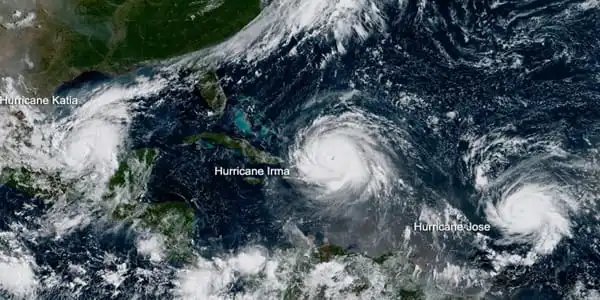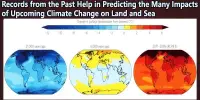Scientists have discovered how natural archives documented the frequency of Atlantic hurricanes over the last 1,000 years. More data is required to better predict how climate change may affect storms in the future. Hurricanes in the Atlantic do not come and go. They leave traces of their passage through the landscape that can be traced back centuries or more. Scientists at Rice University are utilizing natural archives to look for signals of storms hundreds of years before satellites allowed us to see them in real-time.
Elizabeth Wallace, a postdoctoral scholar in the lab of Rice climate scientist Sylvia Dee this year, is expanding on approaches that reveal the frequency of storms in the Atlantic basin throughout millennia.
Paleoclimate hurricane data (or ‘proxy’ data) can be discovered in archives such as tree rings, which maintain evidence of short-term floods, sediments in blue holes (marine caves), and coastal ponds, which preserve traces of sand swept inland by storm surges. These natural archives provide researchers with a sense of when and where hurricanes have made landfall.
Wallace, Dee, and co-author Kerry Emanuel, a climate scientist at the Massachusetts Institute of Technology, examine whether or not hundreds of thousands of “synthetic” storms generated from global climate model simulations over the past 1,000 years are captured by the vast network of Atlantic paleohurricane proxies in a new paper published in Geophysical Research Letters.
During a storm event, you get powerful winds and waves that pull sand from the beach and basically just dump it back into a coastal pond. These sand layers are only deposited in the pond during storm occurrences, and they can be seen in the sediment cores intermingled with the fine mud that is normally there.
Elizabeth Wallace
Scientists will learn more about the ebb and flow of Atlantic hurricanes over time by reconstructing the past. Previous research by Wallace and others has shown that a single site collecting past storms cannot be used to reconstruct hurricane climatic changes; rather, a network of proxies may aid in refining models of how these storms are anticipated to be affected by climate change in the future.
“These paleo hurricane proxies allow us to reconstruct storms into the past, and we’re using them to figure out how basin-wide storm activity has changed,” said Wallace, a Virginia native who earned her doctorate last year at MIT and the Woods Hole Oceanographic Institution and met Dee when the professor spoke there in 2017.
“If I have a Florida sediment core, it’s only recording storms that strike Florida,” she explained. “I wanted to test if we could reliably reconstruct basin-wide storm activity over the last few centuries using the entire collection of information obtained from the Bahamas, the East Coast, and the Gulf of Mexico over the last few decades.”

The synthetic storms they created helped to demonstrate what Wallace already knew: there is a bias toward the Caribbean and Gulf of Mexico, and additional proxies along the eastern coastlines of North and Central America are needed. The Rice team’s next goal is to improve their climate models and add more sites to the networks in order to better reconstruct past storm activity.
“There aren’t really any sites from the Southeast United States, locations like the Carolinas,” she remarked. “One of the goals of this work is to identify where scientists should go next to the core.”
Wallace has firsthand knowledge of core drilling. “During a storm event, you get powerful winds and waves that pull sand from the beach and basically just dump it back into a coastal pond,” she explained. “These sand layers are only deposited in the pond during storm occurrences, and they can be seen in the sediment cores intermingled with the fine mud that is normally there. We can date these sand layers and determine when a hurricane hit the area.”
She emphasized that no “intensive” effort has yet been made to match sediment and tree ring records. “The tree record remains an unreliable proxy,” Wallace added. “We’re looking for tree ring records with rainfall signatures that correspond to storms that occurred in the last 200 or 300 years and match sediment records from the same time period.”
According to Dee, the work is fundamentally different from the paleoclimate models she often investigates. “We’re using climate models and generating hundreds of pseudo-tropical storms here,” she explained. “We’re ‘playing Gaia,’ constructing a believable version of reality and mixing it with our knowledge of available proxy sites.
“This informs us how much data from how many different locations we realistically need to capture a climate signal,” Dee explained. “It’s really expensive to go out and drill cores, so this allows us to prioritize where we drill.
“This finding is critical as we rush toward a climate mean state with ever-warmer Atlantic Ocean temperatures,” she says. “Knowing how these storms evolved through time provides a baseline against which to compare tropical cyclones with and without human impacts on the climate system.”
















